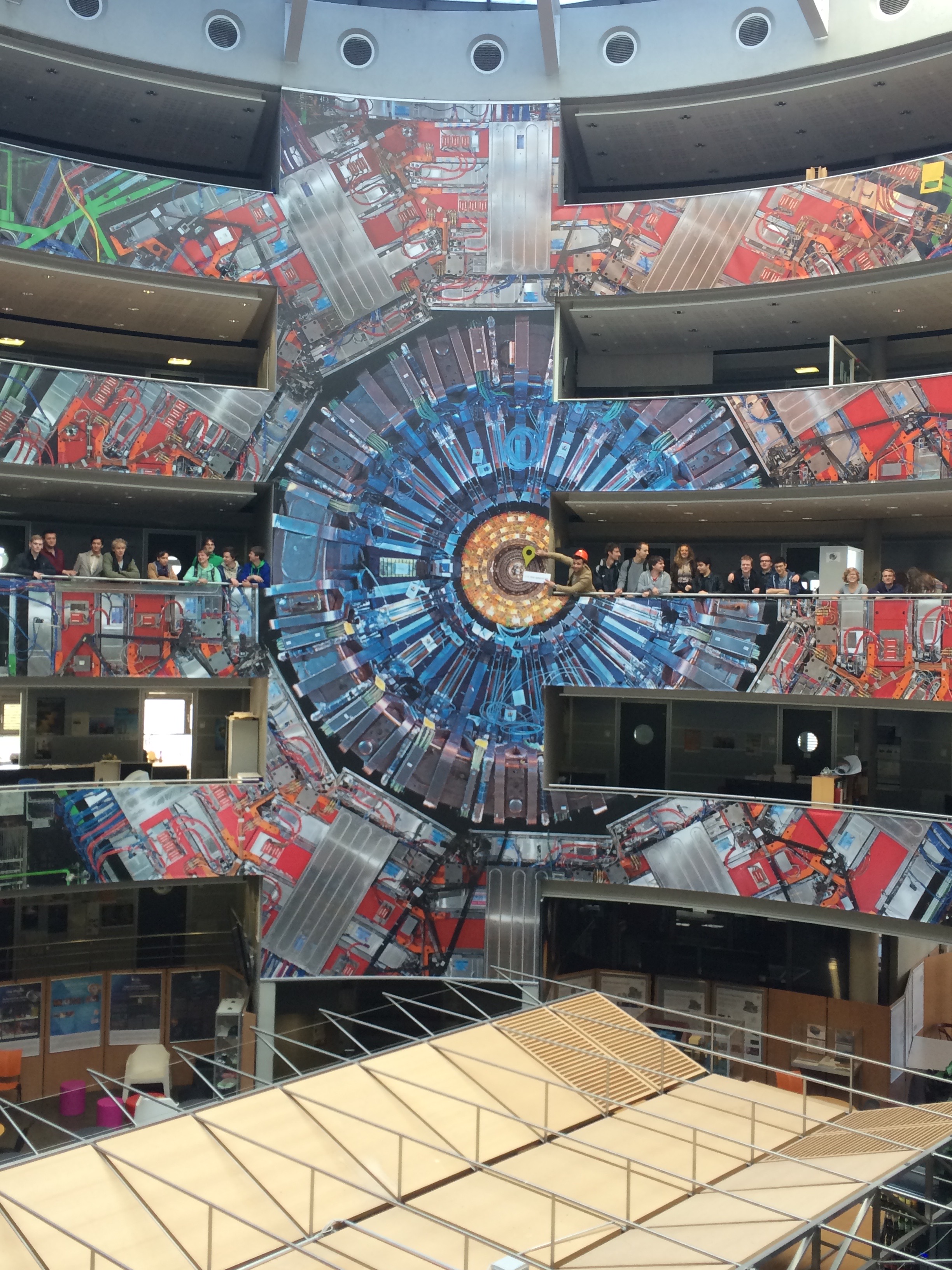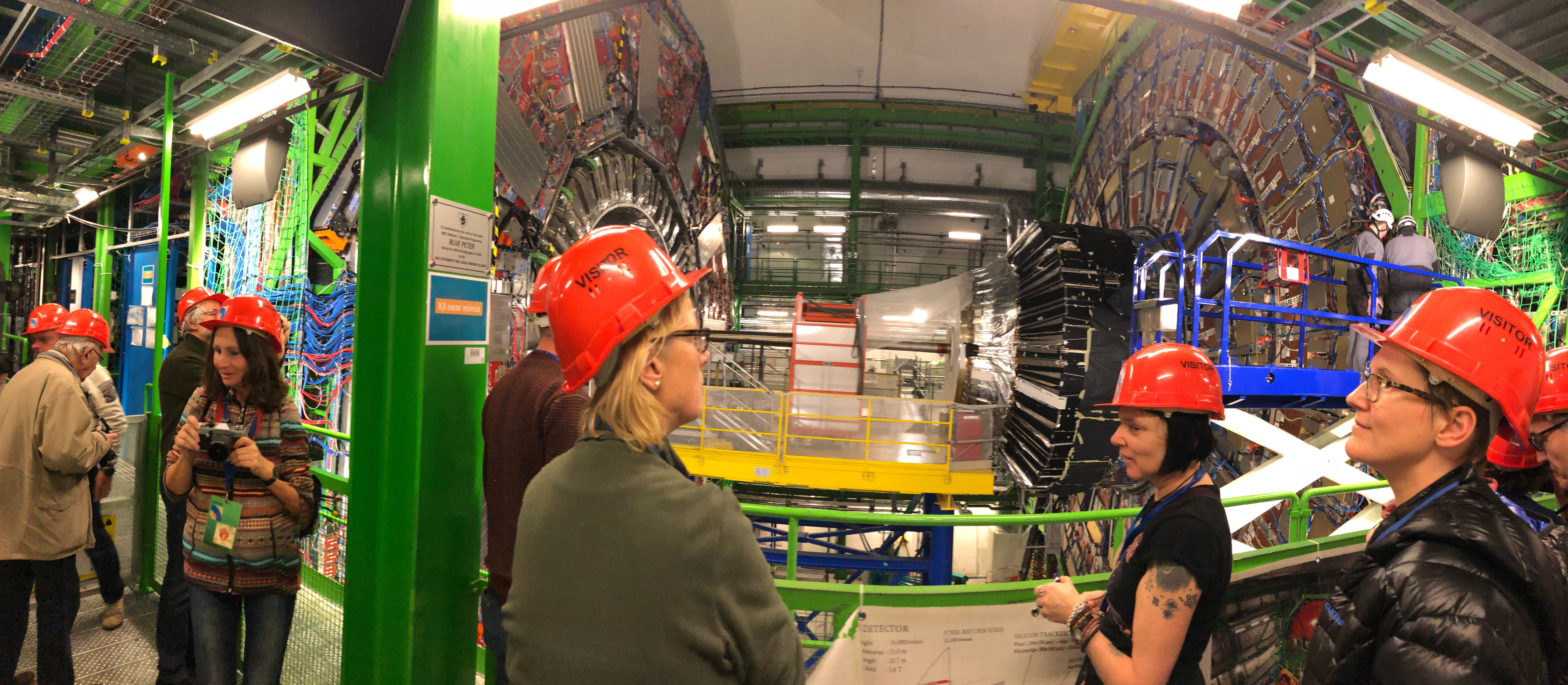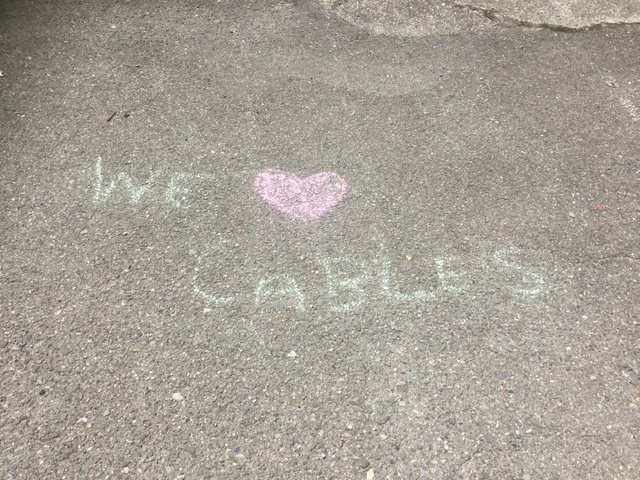Visiting CERN, an insider's perspective
In this blog I intend to give a give an insider perspective on how CERN tours are arranged and what is happening behind the scenes.
As a professional physicist, I have responsibilities including research, writing papers, submitting grant proposals, peer reviewing, teaching, coordinating work at the university, all important but not always visible to the outside world. But the science I do is funded by taxpayers. And this makes it important to me to show that we do research that is worth it. Just in case you are wondering, a typical European citizen pays around 3 to 4 euros per year to CERN, more on the CERN budgets here, about the same budget as Real Madrid and FC Barcelona added together to see which countries contribute. I find giving CERN tours extremely important and a good way to give back to society, as it gives people a chance to see what we do, why we do it and how as well.
CERN is one of the most inspirational science labs in the world so it is no surprise that many families, schools and individuals of all walks of life are excited to visit our lab and then in particular the underground facilities. Yearly, CERN has around 40000 visitors, and depending on which facilities are accessible and safe to visit, many get to visit the experiments.
Almost all tour guides are volunteers from the 15000 international scientists that work at the laboratory. So this means it is highly likely to get a tour in even non-European languages if you reserve long enough in advance!
As a service back to society, I try to make sure I do give a few tours per year so people get to see the Compact Muon Solenoid experiment, the particle physics detector that I use to do my research.
 Students from the Bachelor of Physics programme at the Vrije Universiteit Brussel during their visit to CERN. Source: F. Blekman
Students from the Bachelor of Physics programme at the Vrije Universiteit Brussel during their visit to CERN. Source: F. Blekman
Getting a visit to CERN
Tours at CERN are completely free but need reservations due to high demand.
First the registration, most tours make a request to the CERN visits service. This can only be done three months or so before the tour date, and popular times for tours during holidays and weekends are very quickly booked completely.
Moreover, there also is limited capacity; particularly for large groups this can be a prohibitive problem as safety regulations require that there is a tour guide for every twelve visitors. Once the visitor service has confirmed the tour, they start checking on which date which experiments are accessible. This really depends on the date and time, as there are many big and small experiments, and the tours only happen when there is no interference with data taking and it is safe to visit (so the accelerators are off).
The tour guide perspective
This is also the point when the tour guides get into the organization, we get to see all tours that are available to the experiment we work on, what level tour is required (obviously, tours for high school students are expected to be less detailed than tours for students in their final year of the MSc Physics degree) and which language the group speaks, the minimal requirement being English, French, Italian or German. And the guides sign up when they have time besides their normal work.
All guides have received additional training, both about historical, engineering and physics details of the experiment that the group will be visiting, but for example also regarding safety, including a full first aid training course. Dealing with groups of civilians who are there for tourism is after all different than the same number of physicists ☺ .
What can I see during a tour?
So then we get to the tour itself. The tour locations, including the experimental underground visits, are organized around the ongoing research. So that means: if the tour interferes with the research, there is no tour. Also the route is adjusted if there are construction or work happening on the standard route.
 Overview of the control room of the Compact Muon Solenoid experiment. The control room is at ground level, approximately 100 meters above the detector. Source: F. Blekman
Overview of the control room of the Compact Muon Solenoid experiment. The control room is at ground level, approximately 100 meters above the detector. Source: F. Blekman
When people visit the Compact Muon Solenoid, they typically get to visit both the overground facilities, including control rooms, the hall where the detector was put together above ground and the detector technical exhibits that explain how our detectors work. As an introduction we show this youtube video, for which I did the dutch language subtitles. By the way, this is for us quite an expensive production, so the production was partially sponsored for by a large electronics company, thanks!
After that we go underground, with a guide per twelve visitors. At that point we give the visitors some fun orange helmets so they are easily spotted (most physicists wear white helmets as those are the ones we can get at the CERN stores). And the fun already starts going going down, the elevator trip from ground level to the level of the large hadron collider takes about one minute (it is about 33 levels in a normal building).
And then we get to the detector, after passing by all the electronics that is used for the data selection, I blogged about that in a previous post. This is usual the highlight of the visit, for obvious reasons!
Here you see a nice panorama view of the visitor platform, by the way this pic was taken during one of the CERN visits I recently guided in February 2018:

a group of visitors from Belgium on the visitor platform at the Compact Muon Solenoid in 2018. In the background you see detector maintenance happening at the same time. Source: F. Blekman
I can't make it to CERN :(
That's not even that much of a problem, both the ATLAS and Compact Muon Solenoid organise virtual visits for which you only need an internet connection and an appointment. And without an appointment you can visit the detectors in Google streetview!
Damn it looks like a physicists heaven
Seriously, this is so cool! The only drawback is that it makes my own lab look quite shitty in comparison. ;-)
haha well our offices are pretty crappy, if that's a comfort. We spend our money on cables and the experiments
because:

(and experiments)
cableeeeeeeeeeees !
wooooooooo
Lol
At least you do real science day to day. Everything I do is on a computer :) .

haha well a lot of what I do is computer based too, don't worry
Amazing work. Maybe in a different dimension I am working there, but in this one I had bad physics teachers that didn't instill me any interest at the time. I got interested in IT and then I got sucked in by the Aviation Industry. Now I am writing about Space Mechanics and often find myself thinking at the other dimensions of me doing more applied or theoretical work in physics. I was there before it was opened, when they had posters all around lake Leman. I wanted to follow you but I was already following you, hoping to read more about the experiments, even after they will close LHC. Cheers!
Happy to hear you like the post! We will start running again this spring, and fun results are coming out all the time. Once I've gone over the basics I will start writing about the physics results we make public, up to now I have not gotten to that.
And yes, that poster exhibit on Lac Leman was really great, I enjoyed it too. It was around the corner from where I lived when in Geneva and I would purposefully take the (slightly) longer route to work so I could check out the photos in the morning, they have so much depth!
You are blessed with that country, I explored it in lengh, from St. Gallen to Geneva and from Basel close to Interlaken. Couldn't get to Murren but maybe this year. Can't hope to exhaust Switzerland in a few weeks :) So expensive but totally worth it. Cheers and a great weekend!
That's like...nothing!
I wanted to work at the atomic accelerator that was being built in Texas when I was a kid. I thought I would go to university and major in physics and math. But the stupid legislature decided to scrap the project. So now I will have to make it to Europe to visit CERN instead. Thank you for the great information on how to book my future tour!
if that accelerator would have been built,we would have discovered the Higgs particle in 2001 or so already. It was really a sad day for US science when the project was cancelled
Ever felt any Mandela effects while working there?
Thank you for sharing
What would you say is the most interesting discovery made by CERN to the best of your knowledge at this point? I've heard a lot of mystical and far fetched theories of the actual implications of what CERN is actually experimenting ranging from other dimensions, to opening portals, plus all the symbolism they use from the Shiva statue outside to their actual logo somehow implying 666 and that odd dance video they came out with a few years ago called Symmetry. All very interesting but what's the real purpose or end goal of the project as far as you're aware; if you can't say for professional reasons I respect that as well.
Everything that comes out of CERN is public, and is published in scientific journal papers so also readeable for non-CERN people (although of course I admit we use some jargon which can confuse non-experts).I am allowed to say anything I want, there are no limitations to that from CERN. If you want to read more I propose you start with some popular science books, for example the one by Jon Butterwhorth.
Essentially the whole list of 'theories' you give are fictional conspiracy theories and not true. We do have a statue of Shiva that was given to us by the Indian government when India joined CERN. Some of us don't like having a religious symbol on site but it is a pretty statue at least, better than having a large crucifix I guess. And it is just a bronze statue, nothing more than that :)
So:
So what IS the real purpose? We study collisions of one particle on one particle in extremely controlled conditions. Those conditions also happen in the earth's atmosphere, but are of course impossible to measure in detail there.
Why do we study those collisions: because we can use those collisions to figure out how all matter, atoms, etc around us sticks together and what building blocks it is made of. This is important knowledge that will help scientists figure out how the universe started to exist, but also gives us more knowledge on the world around us.